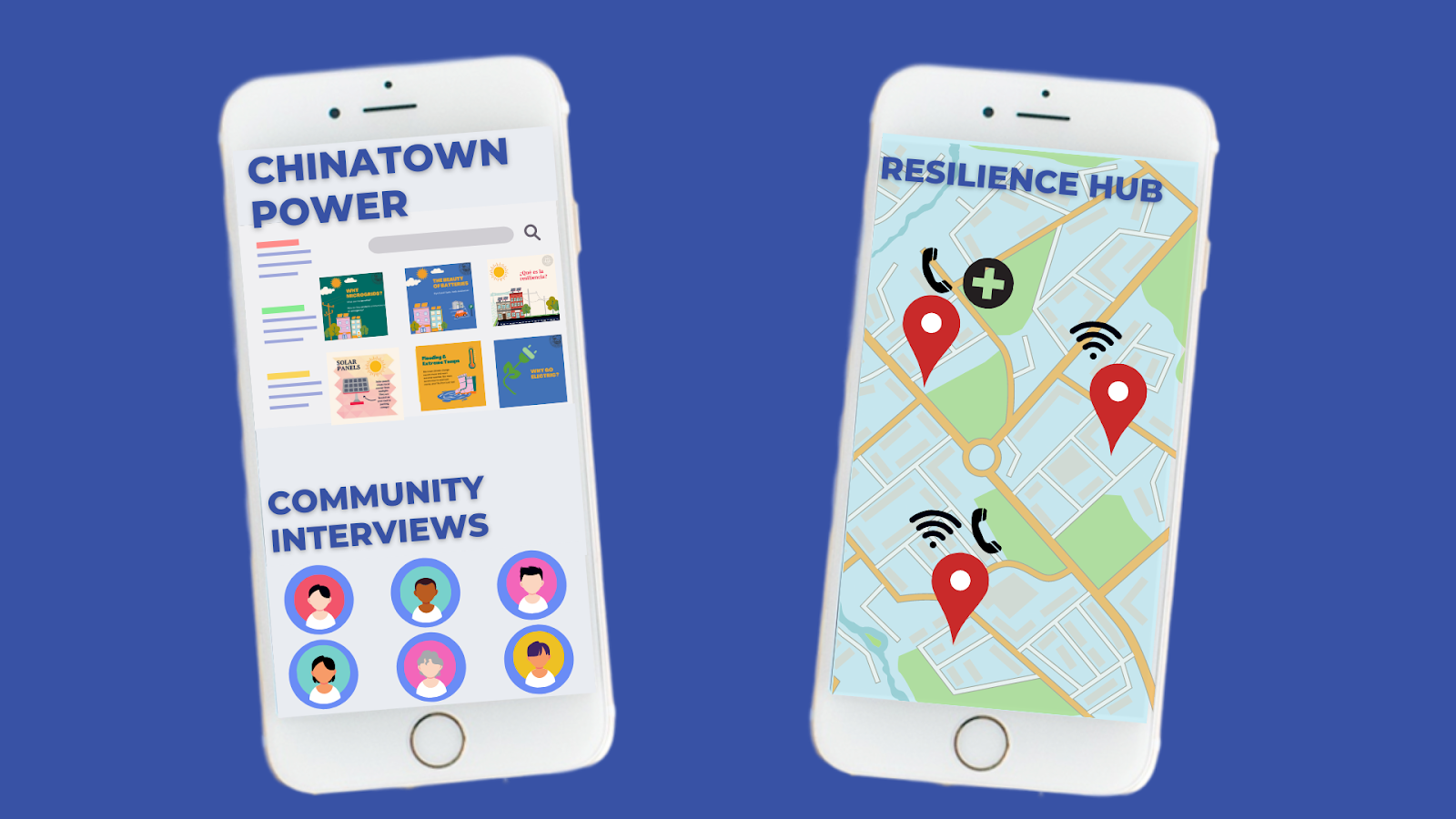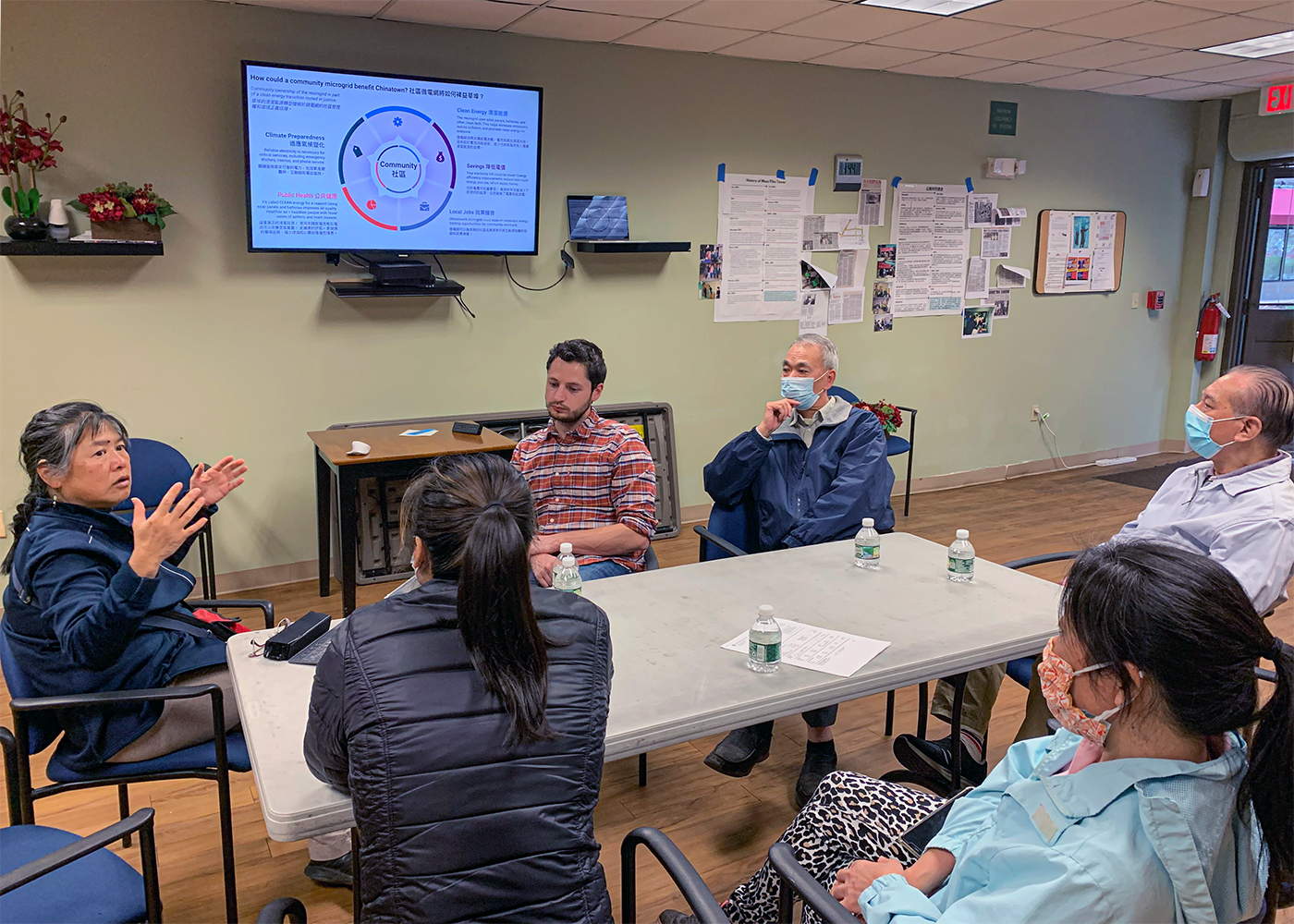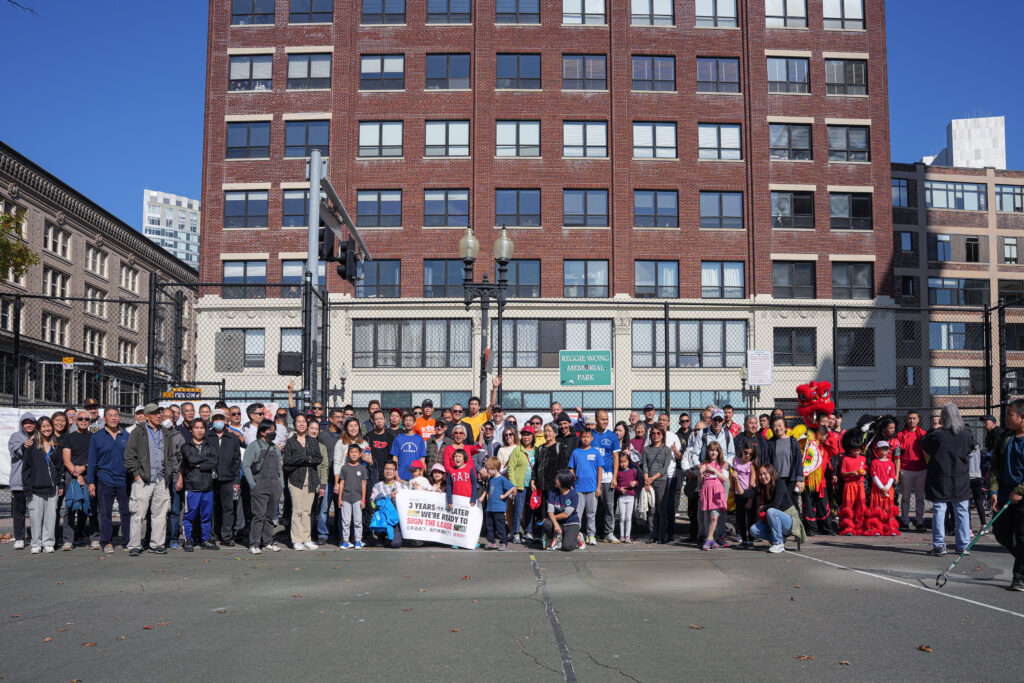December 19, 2022
Meet Chinatown Energy Literacy Campaign
Anna Scherling
We recently connected with Lydia Lowe and Jen Stevenson Zepeda from 2022 Sasaki Foundation Design Grants project Chinatown Energy Literacy Campaign. As part of a larger community-owned energy microgrid project, Climable, Chinatown CLT, and Chinatown Power, Inc. are creating a multi-lingual clean energy literacy campaign for Boston’s Chinatown neighborhood and an interactive webpage where visitors can access useful information about understanding their bills and utility options, or how to access alternative energy and efficiency options.
Sasaki Foundation (SF): What was the biggest inspiration behind your project?
Jen Stevenson Zepeda (JSZ): This project is part of a broader initiative we’ve been working on for around six years and I think what we are working towards is so motivating: community resilience! We are thinking about what a community needs in normal times and in an emergency, and a lot of that is knowledge in where they can go for help and resources. As we’ve been thinking about how to implement this I have always had at the back of my mind the power of images and infographics because they can transcend language barriers. With Chinatown being a neighborhood with a lot of language diversity, making sure what we create is accessible for all is important to us. Sasaki’s Sea Change: Boston interactive maps are a great example of images that communicate a lot of powerful information. I am hoping we can create something just as cool for our needs!
Lydia Lowe (LL): We feel really fortunate to have come into this project after years of groundwork had been laid by members of the Resilient Urban Neighborhoods–Green Justice Coalition (RUN-GJC) team, including our community partner the Chinese Progressive Association. It’s inspiring to me to work with a team that is so committed to solving the tough questions to both help save the planet and empower our most impacted communities.

Mobile energy literacy platform prototype
Image courtesy Chinatown Energy Literacy Campaign
SF: Who makes up the team? What are their backgrounds and expertise when it comes to the project?
JSZ: I can take the Climable part. We are a women-run nonprofit and we are technical translators. This means our forte is taking complicated information on climate change or clean energy and putting it to words or a format that is easier for the average person to understand. We’ve helped the City of Chelsea and City of Cambridge with some energy literacy work, with language translation of course! We’ve also been part of the microgrid team since the beginning so we know the ins and outs of the projects really well. I think one of the things we excel at is collaborating: we love putting our heads together in a good old fashioned brainstorming sesh! And we feel we always end up with a stronger product when we take that collaborative and iterative approach.
LL: For the Chinatown Community Land Trust (CCLT) and Chinatown Power, many of our members have grown up in Chinatown or lived here for decades, so they have deep roots and understanding of community needs, priorities, and concerns. Sari Kayyali, our microgrid manager, brings prior experience in technical and construction project management as well as a healthy curiosity and energy.

Chinatown Energy Literacy Campaign Mass Pike Towers Tenant Association October 2022 Workshop to spread awareness of environmental justice issues and inspire participation in the community microgrid
Image courtesy Chinatown Energy Literacy Campaign
SF: What is one of your favorite aspects about your work on this project?
JSZ: Other than getting to work closely with our friends at Chinatown Power? For me, I love a creative project and thinking through a puzzle. We are trying to create materials that will be helpful to the residents of Chinatown; that are not just easy to understand and available across a variety of formats and platforms, but also that will withstand the test of time. In this project we get to start digging into some nitty gritty stuff while we determine what all those components are and how they are meant to function… and then we get to put them all together into a cohesive suite of materials. I am excited about this.
LL: Since the microgrid project—which is our biggest energy justice focus—is so technically complex, it’s a great challenge to think about. What does it all mean for a Chinatown family and how do we share what we are learning? I have a lot to learn about design work and communications, so I feel fortunate to be partnered with the Sasaki Foundation and to have access to Sasaki’s expertise.
SF: What are the aspirations you have for this project and the impact your work will make on your community?
JSZ: Well, I’m not a resident of Chinatown, so I can’t speak to that part. What I can say is that I am hopeful that what we create in our time here at Sasaki with our team is that we have a whole slew of amazing looking graphics, we’ve found a way to get them into English and Chinese elegantly, and we have them available to people in digital and analog formats. More broadly, I hope people use them as a resource!
LL: I hope that we can create something that is really useful to Chinatown residents. It’s a challenge because energy is not something people often spend a lot of time thinking about, but with energy costs rising, this may create more interest in our energy literacy project.
SF: How can others get involved with the work you’re doing?
JSZ: Great question. Lydia will have a better answer about community participation, but I would be silly to miss the chance to plug our social media channels. You can find @climable on most platforms and CCLT and Chinatown Power also have a social media presence. That’s probably the easiest way to keep tabs on things at a high level. I’m sure all of us are always open to donations too!
LL: There are a lot of ways for people to get involved. Chinatown community members can help us by providing their own input and organizing small discussions of their friends and neighbors. Volunteers can offer a variety of skills to our energy literacy campaign, the microgrid project, or our work on open space, historic and cultural planning, or affordable housing preservation. And yes to what Jen said as well. Our handles are @ChinatownCLT and @ChinatownPower!

Chinatown CLT helped host Reggie Wong Park Day to advocate for community control of and improvements for the neighborhood’s only recreational open space
Image: Aubrey Tang of the Chinatown Project, courtesy Chinatown Energy Literacy Campaign
Thanks so much to Jen and Lydia for their time, and to the entire Chinatown Energy Literacy Campaign team for all their hard work on this impactful project. Stay tuned for future installments with more of our 2022 Design Grants teams!
